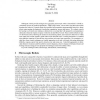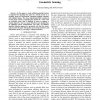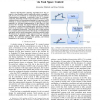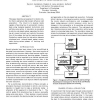329 search results - page 19 / 66 » A Neural Network-Based Approach to Robot Motion Control |
IROS
2009
IEEE
14 years 3 months ago
2009
IEEE
— This paper describes 3D biped walking generation and control based on Limit Cycle Walking. In our study, we use the simplest possible 3D biped model with three DOFs, incorporat...
AAMAS
2007
Springer
13 years 8 months ago
2007
Springer
Multiagent control provides strategies for aggregating microscopic robots (“nanorobots”) in fluid environments relevant for medical applications. Unlike larger robots, viscou...
CDC
2009
IEEE
14 years 18 days ago
2009
IEEE
In this paper, a novel artificial potential function is proposed for planning the path of a robotic sensor in a partially observed environment containing multiple obstacles and mul...
IROS
2008
IEEE
14 years 3 months ago
2008
IEEE
Abstract— Kinodynamic planning algorithms have the potential to find feasible control trajectories which accomplish a task even in very nonlinear or constrained dynamical system...
IJCAI
1989
13 years 9 months ago
1989
This paper describes an approach to robotic control that is patterned after models of human skill acquisition. The intent is to develop robots capable of learning how to accomplis...




